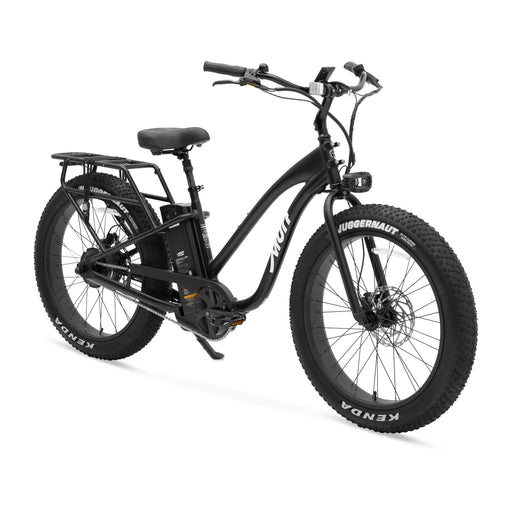Electric Vehicles and Alternative Energies
Electric Vehicles and Alternative Energies
Electric vehicles fall into two categories: all-electric vehicles and plug-in hybrid electric vehicles. All-electric vehicles might be battery-powered or fuel cell-powered, and these vehicles operate only with electricity. When the battery of these cars is depleted, it will be necessary to charge it again to continue driving. Plug-in hybrid electric vehicles will run on both electricity and gasoline, making it possible to switch over to a conventional internal combustion engine if the electric battery dies. The benefits of electric vehicles include a reduction of emissions, which helps improve both the well-being of humans and animals and the environment. Global popularity of electric vehicles is gaining traction. Current projections estimate 18.7 million electric vehicles on American roads by 2030, which would be an increase of one million from 2018.
BEV (Battery Electric Vehicles)
Battery electric vehicles (BEV) are completely electric, powered by chemical energy stored in rechargeable batteries. These cars store electricity onboard via battery packs, and these battery packs run both the electric engine and all corresponding electronics in the vehicle. No carbon emissions are emitted from battery electric vehicles, and they are charged electrically from a charging source. Some BEV have a motor to power the front wheels and a second motor to power the rear wheels. BEV have a simple powertrain that needs little maintenance, but frequent recharges are necessary.
- How Do Hybrid Electric Cars Work?
- Types of Electric Vehicles
- Battery Electric Vehicle
- Battery Electric Vehicle Basics
- All Electric Vehicles
- How To Maintain a Battery-Electric Vehicle
- Electric Bikes
PHEV (Plug-In Hybrid Electric Vehicles)
Plug-in hybrid electric vehicles (PHEV) have an internal battery that can be recharged through either regenerative braking or by plugging the battery into an external power source. PHEV also have a conventional gas or diesel engine. These vehicles can travel up to 40 miles before the internal combustion gas engine begins providing power assistance. PHEV provide flexibility for drivers with the option to use electricity as much as possible, but have a back-up gasoline engine available to use when necessary. The gasoline engine can also take over when using the heater or air conditioner or during times of rapid acceleration.
- Differences Between Battery Electric Cars and Other Electric Vehicles
- Plug-In Hybrid & Electric Vehicle Research Center FAQ
- Best Hybrid/EV Buying Guide
- Plug-in Hybrid Electric Vehicles
- Electric Bikes Can Be Affordable
- Plug-in Hybrid and Other Electric Vehicles
- Plug-In Hybrid Electric Vehicle Basics
- Plug-in Hybrid Electric Vehicles
HEV (Hybrids)
Hybrid electric vehicles (HEV) receive their power both electrically and via gasoline. The electric source of energy is generated by the vehicle's braking system, which recharges the battery. This regenerative braking involves the electric motor slowing the vehicle, using some of the energy that would typically convert to heat with braking. Hybrid electric vehicles start using electricity, but the gasoline engine begins helping as the car's speed goes up. An internal computer controls both motors, which helps these vehicles achieve the best fuel economy.
- Hybrid and Battery Electric Vehicles
- How Hybrid Electric Vehicles Work
- An Introduction to Hybrid Electric Vehicles
Reduced Emissions and Renewable Energy
Reducing emissions involves reducing carbon footprint by choosing renewable and clean sources of energy. Examples of renewable energy sources include wind, solar, low-impact hydroelectricity, and biogas. Renewable energy does not use fossil fuels, thereby producing no greenhouse gas emissions. Renewable energy results in a diversified energy supply, reducing a nation's dependence on imported fossil fuels. Reducing emissions also improves public health by reducing air and water pollution. Human health can improve with fewer breathing problems, heart attacks, cancers, and premature deaths. Reduced emissions should also help lessen global warming, which occurs when the atmosphere is overloaded with carbon dioxide and other emissions. Carbon dioxide is the most prevalent greenhouse emission. Renewable energy sources contribute little to no greenhouse gas emissions when compared to conventional emissions.
- EEI Celebrates 1 Million Electric Vehicles on U.S. Roads
- Renewable Energy Holds the Key to Making Electric Vehicles Truly Zero-Emission
- Local Renewable Energy Benefits and Resources
- Benefits of Renewable Energy Use
- The Many Benefits of Reducing Carbon Pollution from Existing Power Plants
- Beyond Renewables: How to Reduce Energy-Related Emissions by Measuring What Matters
- Renewable Energy Sources Cut Carbon Emissions, Efficiently Increase Electricity Output Worldwide, Delegates Say in Second Committee
Benefits of Electric Vehicles
Driving an electric vehicle has many benefits. The electricity needed to charge an electric vehicle costs less than gassing up a conventional gasoline-powered vehicle. Electric cars are also easier and less expensive to maintain. These cars do not have fuel injection systems, radiators, exhaust systems, and starter motors. Only the brakes, tires, and suspension system will require ongoing maintenance in an electric vehicle. Even a hybrid vehicle will likely require less maintenance, because the electric motor will be used for a significant amount of the driving time. Electric vehicles emit less pollution from exhaust emissions, and many of them are made of recycled materials. Reduced exhaust emissions contribute directly to better human health, cleaner air, and better water quality. Some electric vehicle features also contribute to improved safety, such as a lower center of gravity which reduces roll-overs and a reduced risk of fires and explosions.
- Benefits of Electric Vehicles
- Expanding Electric-Vehicle Adoption Despite EV Market Growing Pains
- Benefits of Electric Vehicles
- Benefits of EVs
- The Compelling Economic Benefits of Electric Vehicles
- Electric Cars: Benefits and Disadvantages
- Economic and Air Quality Benefits of Electric Vehicles in Nevada (PDF)
- Benefits and Considerations of Electric Vehicles
- The Biggest Pros and Cons of Electric Vehicles





 info@murfelectricbikes.com
info@murfelectricbikes.com
 1-949-218-5920 (SC)
1-949-218-5920 (SC)
 Find Retail or Service
Find Retail or Service















